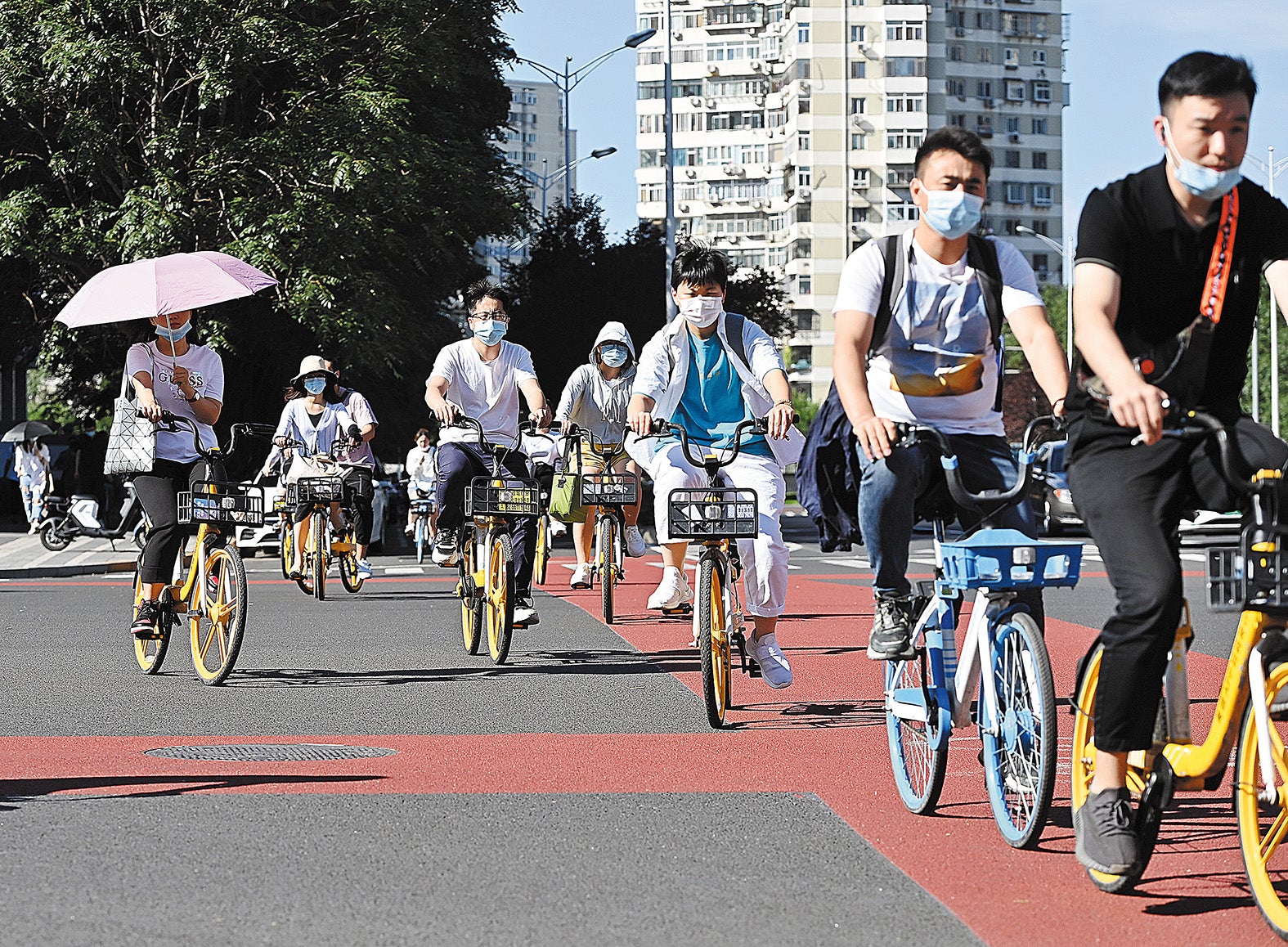Bikes bite back: Streets going cycle-friendly
THE ARTICLES ON THESE PAGES ARE PRODUCED BY CHINA DAILY, WHICH TAKES SOLE RESPONSIBILITY FOR THE CONTENTS

For cycling enthusiast Jia Feng, riding to work in Beijing allows him to get in his daily exercise and frees him from the capital’s notorious traffic jams.
However, cycling is not always a joyful experience. The occasional takeover of cycling lanes by cars – the number of which rose by almost five million over the past 20 years to 6.57 million by the end of last year – left him with conflicted feelings about life in the saddle.
Of late though, the Beijing resident has found that commuting is becoming increasingly enjoyable as local authorities endeavor to encourage environmentally friendly travel in the midst of a national campaign to promote green transition.
Residents near the capital’s Second Ring Road were surprised to discover that cycling lanes appeared to have been widened. A closer look revealed what had happened recently.
Though traces of the original white lines separating the lanes for cars and bicycles – as well as the ones dividing lanes for traffic – remained visible in places, new lines had been drawn to make the lanes for cars narrower and the one for bicycles wider.
The Beijing Municipal Commission of Transport says the capital plans to widen bicycle lanes along every section of the Second Ring Road from 6.6ft to at least 9.8ft.
Other efforts are underway to return Beijing to the reputation it once enjoyed as a cycling capital.
Authorities have managed to renovate more than 1,864 miles of bicycle lanes in the past five years, either by widening or by removing parking lots that infringed on them, said Jing Lubo, an official at the commission’s urban road management, adding that as a result the proportion of trips made by bikes in the capital has risen from 39.3 per cent to 46.7 per cent.
Last year, with the Beijing Traffic Management Bureau, the commission set up multiple pilot programs to promote commuting by bicycle. First, road signs for bicycles were put up along some side roads, and five special traffic lights were installed to make it easier for cyclists to turn left at crossings.
The municipal government also plans to build bike routes along 12 waterways, which will help connect cycling networks between the Second and Fourth Ring roads and create a green transportation network.
Jia, 58, a public servant who used to ride to work a decade ago, began to commute by car as the number of vehicles in Beijing rose, despite his office being only 4.3 miles from home. He went back to cycling last year. He had stopped swimming three times a week and chose to ride to work as an alternative form of exercise.
After cycling to work for the past 13 months Jia has found that it is a much better way of commuting.
“I have ridden more than 3,728 miles and I feel really good. First of all, I am healthier, and a number of physical indicators have improved.” Cycling has saved him time and money as well, he said.
It takes Jia 20 minutes to ride to work, compared with half an hour by car, and he has gained back the 10 hours a week he previously spent swimming. As a result, he saves about 12,000 yuan (£1,370) a year by cycling, he said. “I’m also contributing to pollution control and reducing carbon emissions.”
Previously published on Chinadaily.com.cn
Subscribe to Independent Premium to bookmark this article
Want to bookmark your favourite articles and stories to read or reference later? Start your Independent Premium subscription today.